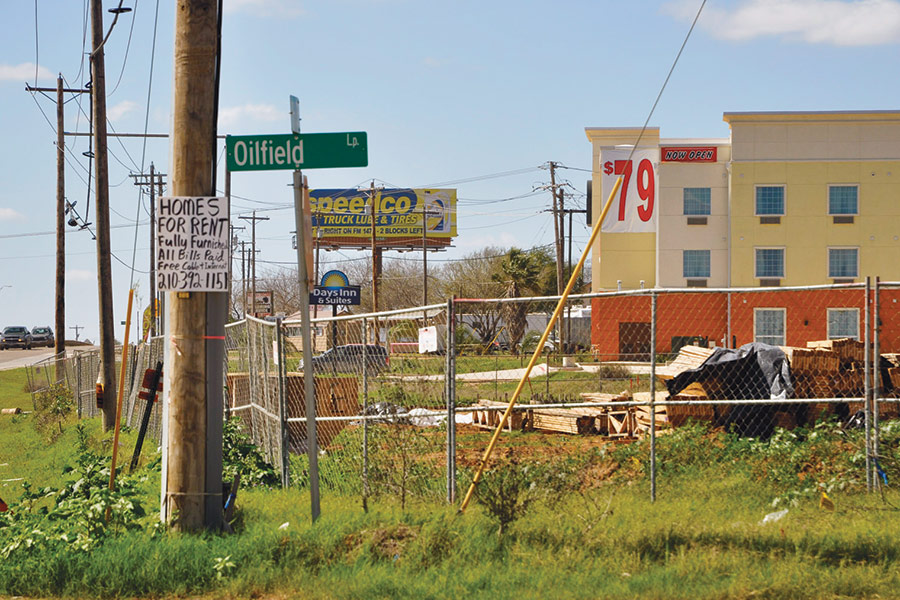
In May of last year, The Architect’s Newspaper ran an essay about how the ongoing oil boom in Texas was impacting the built landscape. Since then the cost of a barrel of oil has plunged from a high in July of 2014 of $120 a barrel to less than $50 as of February 2015.
Despite dire predictions that such a price drop would shut down production in plays such as the Eagle Ford in south Texas, that has not come to pass. The boom is still alive and well.
To better understand what this means for the architecture of the region, the town of Cotulla is worth closer examination as a case study. Located in the heart of the Eagle Ford play midway between San Antonio and the U.S.-Mexico border, Cotulla was established as a stop on the International-Great Northern Railroad line in 1882. Its economy remained primarily agricultural throughout most of its history and for the majority of the 20th century its population hovered between three and four thousand. Since the 2010 census its population has ballooned as it has been overrun with individuals coming to work the oil fields outside of town. In addition to the RV parks and “man camps” that have sprouted up between the interstate and town, there has been a remarkable boom in the construction of chain hotels.
Five years ago Cotulla had two hotels clustered around the Interstate that runs to the east of town. Today it has closer to 30 with more under construction. They are some of the tallest structures in town and these 2-4 story wood-frame buildings are perhaps the most remarkable change to the built environment of Cotulla. Constructed as quickly and as inexpensively as possible, they exemplify the challenge of building for a boom economy. After the oil has been pumped and the legions of roughnecks leave, most of these hotels will be empty. It is an issue local leaders have already begun to consider.
“Everything that we do has to be with the end goal in mind of being sustainable for the future,” said Larry Dovalina, Cotulla’s City Manager. One use being considered for the surplus hotel rooms is to incorporate them into a free trade zone. Cotulla happens to be located such that truckers driving from the agricultural regions of Mexico can get to Cotulla on a single tank of gas. The hope is that the town could become an inland transfer point for goods entering the U.S.
Today there are really two towns of Cotulla. One is the bustling nexus of semi trucks, oil field workers, and cheap chain hotels along the interstate. The other is the still somewhat sleepy small town about a mile to the east. At first glance, the historic part of Cotulla looks much as it did 80 years ago. The depression-era courthouse still sits upon the hill. The commercial strip along Front Street still faces the old railroad tracks that represent the reason Cotulla came to exist in the first place. What is lacking is any ostentatious example of the wealth that theoretically has come to the area as a result of the oil boom. There is no lavish cultural center or unnecessary monorail. But Cotulla now has things that people elsewhere take for granted. The streets are paved. The schools are better than they have ever been.
This is a reflection of the measured approach community leaders have taken to develop a strategy to allow these two Cotullas to coexist. It remains a challenge to make Cotulla appealing for both a temporary worker who needs a cheap hotel room for the night and a family who wants a place to live in the future.